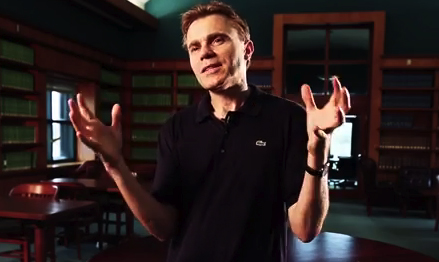Dr. Johnson’s latest research, conducted with physics Ph.D. student Pedro Manrique and published in Physical Review, demonstrates, mathematically, how individual character can be applied to otherwise identical particles and the resulting group formation, interaction, and fragmentation can be studied, analyzed, and predicted.
 |
Previous work on group dynamics in physics has tended to focus on studying the collective behavior of identical bodies. Dr. Johnson’s latest research highlights the importance of unique “personalities” or traits for understanding how disparate parts come together to be one complementary whole, for example, a soccer team.
“The last thing you want to have is 11 Lionel Messi [players] on your soccer team because that’s not going to be a good soccer team, even though he’s the best soccer player in the world,” Dr. Johnson said.
In some situations, he said, it’s better to have teams and other times the preference is for objects to be homogenous.
“Knowing how to describe that mathematically, well, that hadn’t been done before. That’s one of the main contributions of our paper,” he noted.
The physics professor emphasized the importance of heterogeneity in groups and the roles that dissimilar objects play in group formation.
“We found that the way in which groups form is different when you begin to add in that objects are different,” said Dr. Johnson, recently named an Atlantic Coast Conference (ACC) Distinguished Lecturer for the 2015-2016 academic year.
It’s not enough to simply increase the size of the population. What is key is increasing the diversity within the population. When groups reach identifiable critical points of heterogeneity, particles spontaneously form into team-like structures with each serving a particular function in the group. Dr. Johnson’s latest publication posits that the less diversity there is in a population, the easier it is for similar individuals to form a group and the harder it is for dissimilar individuals to form a group.
Modifying the old saying “opposites attract,” the research on group formation and dynamics underscores “opposites-enough attract.” There can be some common traits between one or more entities, but these bodies may never form a group until some critical point is reached. Like a tragic poem, sometimes an individual may never know that it would be better off in another group. That individual may never reach that critical point and thus, never form that better-off group.
Dr. Johnson’s research has had some real-world comparisons outside the minute world of particle physics. His findings can be applied to a host of complex systems ranging from terrorist organizations and insurgent groups to stock traders and even historical gangs.
The work can also be applied to more positive group dynamics. Dr. Johnson is teaming up with fellow College of Arts & Sciences psychology professor Daniel Messinger on an emergence of autism project. The work aims to incorporate Dr. Johnson’s research into studying how children form social groups. In particular, the project hopes to gain insight into how children with various social disorders, namely, autism spectrum disorder, come together and form bonds.
For his future research, Dr. Johnson hopes to apply his work on group dynamics to better understand how the immune system and its components interact, particularly how it tackles shocks to its usual functioning.
January 12, 2016

